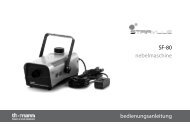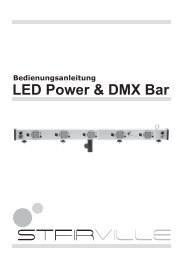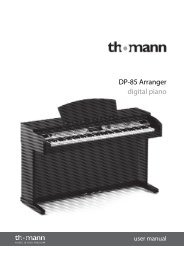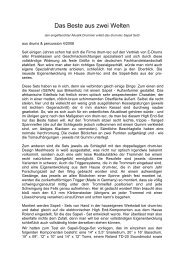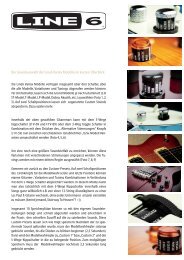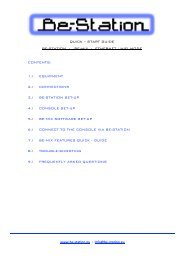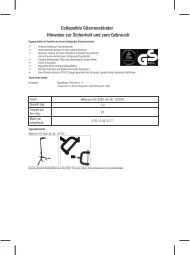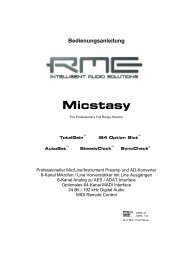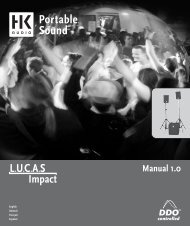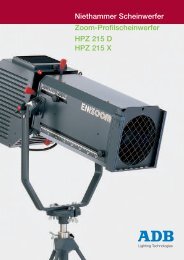You also want an ePaper? Increase the reach of your titles
YUMPU automatically turns print PDFs into web optimized ePapers that Google loves.
1:3 Recording notes<br />
BFD2’s sounds were recorded in studio 1 at AIR Studios at<br />
Lyndhurst Hall, Hampstead, London.<br />
AIR Studios was started in 1969 by George Martin, a producer<br />
famous for his work with The Beatles.<br />
It moved to its present location at Lyndhurst Hall, a stunning<br />
grade II listed converted church in Hampstead, in 1991. It<br />
offers one of the best live rooms in the UK.<br />
Studio 1’s recording room could be described as medium<br />
to large sized. It consists mainly of wooden surfaces with<br />
excellent dispersion characteristics and a fast decaying<br />
‘explosive’ sounding reverb quality.<br />
The size of the room offers a lot of options when recording,<br />
with very different reverb characteristics depending on the<br />
position and height of ambience microphones.<br />
This room was portioned into a slightly smaller space more appropriate for drum recording, without losing its lush reverberant<br />
sound.<br />
The mixing console in the studio 1 control room is a rather special custom Neve featuring ‘AIR Montserrat’ mic preamps. It was<br />
designed in 1989 by Rupert Neve with consultation from George Martin, and is a classic fully-discrete Neve design offering a<br />
bandwidth of 100 kHz.<br />
Personnel<br />
All sounds were recorded and edited by Gareth Green, with engineering assistance from Kevin Hay.<br />
Drumming duties were shared between Emre Ramazonoglu and Darrin Mooney, both respected and experienced session players.<br />
Kit preparation and tuning<br />
During the sessions, the primary objective was to capture the instruments as organically and powerfully as possible, while covering<br />
different kinds of voicing and tuning. A lot of the drums, especially the vintage kits, have loose hardware and other supposed<br />
flaws. These have all been retained, as there really is nothing worse than sterile, characterless drums.<br />
The drums, hihats and cymbals themselves are a mixture of modern, vintage and<br />
custom instruments.<br />
The library includes two historic and famous kits. Firstly, a classic Ludwig ‘Spiral’ Vistalite<br />
that was once owned and played by the late John Bonham and, secondly, Ringo<br />
Starr’s Blue Oyster Ludwig kit that was used on a number of classic albums.<br />
The other instruments in the library were selected to offer a wide tonal and stylistic<br />
range, from the modern, tight punch of the DW Collector’s Series to the warm, rounded<br />
tones of the vintage Gretsch Round-badge kit. We even managed to drag our ‘house<br />
kit’ at FX HQ down to the sessions – a late 70s Rogers XP-8 with Bosphorus hihat and<br />
Brady jarrah wood snare.<br />
Snares especially were carefully tuned to range from deep and loose to tight and ringy with lots of overtones. Drum heads were<br />
chosen in order to complement each individual instrument, while various types of damping were used when appropriate. The<br />
resulting library offers a very wide and varied selection of sounds, great for all kinds of music.<br />
Recording path<br />
All sounds were recorded through the Neve’s AIR Montserrat preamps<br />
into Pro Tools, via Prism ADA-8 XR converters, at 24-bit resolution<br />
with a sample rate of 44.1 kHz.<br />
No EQ, compression or other processing was used on any channels.<br />
11



